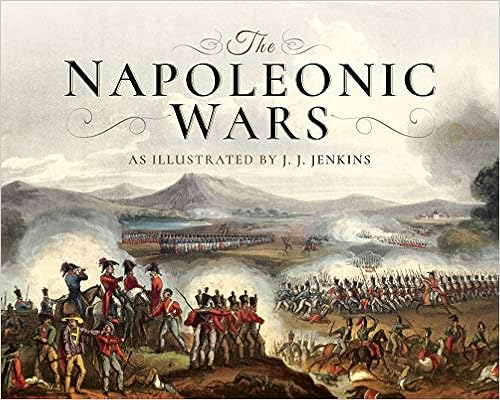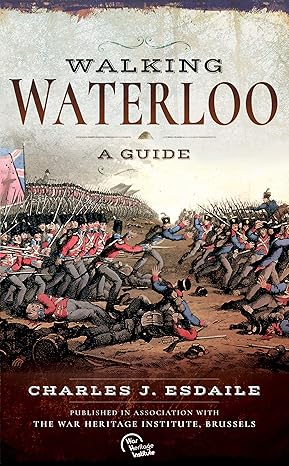Battle of Blue Licks
By Isaac Mounce
The Western Theater of the American Revolutionary War is an obscure topic in United States history of the period. Compared to the war in the original Thirteen Colonies, the Western. Compared to the war in the original Thirteen Colonies, the Western Theater – in what became Kentucky, Indiana, Ohio, and Illinois – is a side note. Nevertheless, the war that saw the beginning of the United States’ western expansion saw some of the most brutal scenes of the war between American settlers and British-backed Native Americans. The primary focus on the American’s expansionist ambitions was on Kentucky. Furthermore, while many Revolutionary War enthusiasts think of the Battle of Yorktown as the war’s end, Kentucky would serve as the site for the last major battle on August 19, 1782. Though small-scale by eastern theater standards, the Battle of Blue Licks went down as one of the most bloodiest and heart wrenching battles in Kentucky. However, Blue Licks turned out to be pointless victory for the Native tribes in their effort to force the settlers out of their homelands.
The Kentucky campaign originated from American colonists’ desire for new land following the French and Indian War in 1763. After winning the French and Indian War and gaining new territory in Canada and the Ohio River Valley, British colonists saw new opportunities for farming and hunting. However, to avoid hostilities with the Natives, Britain’s King George III issued the Proclamation of 1763, restricting the Thirteen Colonies’ access to the western side of the Appalachian Mountains, making Kentucky and further south part of the Indian Reserves.
Defying the Proclamation, hunters and settlers from Pennsylvania, Virginia, and North Carolina, often snuck into southeastern Kentucky via the Cumberland Gap. They viewed the Natives as nomadic and unsettled, which led them to believe Kentucky was opened to settlement. On the other side, the Natives viewed settlers as nomadic invaders and an overall threat to themselves and their way of life. In 1775, Shawnee Chief Cornstalk (Hokolewskwa) voiced “We are often inclined to believe that there is no resting place for us and that your Intentions were to deprive us entirely of our whole Country.”[1] Despite Shawnee and Cherokee efforts to resist white encroachments, they did not deter settlers like Daniel Boone and John Harrod from leading others to establish settlements like Boone’s Station, Harrodstown, Lexington, and others.
Meanwhile, news of the Battles of Lexington and Concord in Massachusetts reached Kentucky. Colonists saw the start of the Revolutionary War as an opportunity to rush over the Appalachians and claim land, leading to Virginian Governor Patrick Henry making Kentucky a Virginian county as tensions between whites and Natives intensified. While older Shawnees like Cornstalk worked to maintain peace, younger warriors like Shawnee Chief Blackfish and Mohawk leader Plukkenehnotee rallied others to fight the settlers. In December of 1776, the war spread to Kentucky after Plukkenehnotee led an attack from on Harrodstown. By late 1777, almost all of the Shawnee rallied after a Virginia militia detained and murdered Cornstalk and his son.
Recognizing that they had a common enemy, the British government permitted Quebec’s Lieutenant Governor Henry Hamilton at Fort Detroit to provide arms and encouragement to the Natives. His strategic goal was maintaining British control over the Ohio River Valley and place pressure on militia forces in Kentucky. Hamilton directed the Natives to make “a Diversion and exciting an alarm upon the frontiers of Virginia [including Kentucky] and Pennsylvania” to demoralize and forcibly divert troops from the Continental Army.[2]
From Plukkemehnotees’s 1776 attack on Harrodstown to the Battle of Blue Licks, the Kentucky campaign was a brutal war of attrition with acts of mutilation and scalping from both sides. Native raids and militia counterraids characterized much of the combat. After making skirmishes and destroying the settlers’ crops and livestock, the Natives would withdraw with Kentucky militia parties following them to retaliate in an ambush. One of the most notorious examples occurred after a group of Shawnee and Mingos attacked and mutilated a group of settlers outside of Harrodstown before attacking the settlement. When Harrodstown’s militia mounted a counterattack, one of the settlers, Major Hugh McGary, whose stepson died from the earlier ambush, found a dead Native warrior wearing his shirt. In a fit of rage, McGary hacked the body and fed the pieces to dogs.[3]
By 1782, the Kentucky campaign was at a stalemate with both sides deterring each other’s offensive operations while combined Anglo-Native raids from Ohio and Illinois against settlements continued to pin down Kentucky forces. Some combats incidents amounted to scattered firefights around Boonesborough. Other engagements ended in slaughter. The most infamous massacre in the Western Theater happened at Gnadenhutten in Ohio in March of 1782, when Pennsylvanian militiamen slaughtered 96 pacifist Delaware Christians. Multiple tribes – Shawnee, Wyandot, Mingo, Delaware, Miami, and Potawatomi – launched a campaign of retaliatory raids and ambushes in Kentucky that would culminate into a series of Anglo-Native offensives.[4]
After a Wyandot victory over a small militia force from Estill Station at the Battle of Little Mountain in March of 1782, over 1,100 members of the six Native tribes and a 150 Canadian soldiers of Butler’s Rangers under Captain William Caldwell convened in early August at a Shawnee village near the Mad River in central Ohio Country. Here, the alliance planned one last attempt to drive the Americans out of Kentucky before they take control of the Ohio River Valley from the British and Natives. Leading the Native coalition was British agent Simon Girty. Along with his brothers, Girty lived with the Delaware since childhood and embraced Native American culture, siding with them and leading raids against the Americans, including the recent attacks at Estill’s Station and Little Mountain. Donning facial war paint, Girty made an impassioned speech: “Brothers, the Long Knives have overrun your country and usurped your hunting grounds. They have destroyed the cane, trodden down the clover, killed the deer and the buffalo, the bear and the raccoon. The beaver has been chased from his dam and forced to leave the country… Were there a voice in the trees of the forest would call on you to chase away these ruthless invaders who are laying it to waste.”[5]
Under Caldwell’s advice, the Natives’ original plan was to attack Bryan’s Station – which garrisoned 44 militiamen – north of Lexington. On August 15, 300 Natives (mostly Wyandots and Shawnees) and 50 Rangers attacked and besieged Bryan’s Station for two days. During the siege, Girty let militia couriers ride past to keep his forces concealed in the woods, not realizing the defenders spotted the attackers and rode out for reinforcements. The couriers came back with 16 militiamen to reinforce Bryan’s Station, increasing the fort’s strength to 60 men. After a failed assault on the fort and destroying crops and livestock, Girty and Caldwell slowly withdrew northeast. The siege ended with five Native dead and two wounded, while the Kentuckians suffered four dead and three wounded.
On the 18th, more Kentucky reinforcements arrived. Of the Fayette County militia were 47 men under Colonel John Todd and Lieutenant Colonel Daniel Boone. Of the Lincoln County militia were 135 men under Lieutenant Colonel Stephen Trigg and Major Hugh McGary. With Todd in overall command, the Long Knives made up 182 militiamen, plus those from Bryan’s Station. At the same time, an additional 400 men under Colonel Benjamin Logan were enroute from Logan’s Station on horseback.
The Long Knives’ fifteen officers were divided on what to do next. Because Logan was two days from Bryan’s Station, Todd and most of the officers wanted to chase after the Natives and British – who already had a 40-mile head start – immediately, before they crossed the Ohio River. McGary suggested waiting for Logan’s reinforcements so they would outnumber the enemy forces. Todd scolded McGary’s opinion, suggesting he was timid at chasing the enemy. McGary was an emotionally insecure man, and had a reputation for his violent temper towards whites and Natives. He further fueled his instability after his stepson’s brutal death at the hands of the Shawnee in 1777, which – in retaliation – hacked a fallen Shawnee to pieces before feeding them to dogs. To McGary, being called timid was the same as being called a coward, a taboo for most male Kentucky settlers. Nevertheless, McGary quietly took his criticism as he complied to his peers.[6] The Long Knives ultimately set out in pursuit of the Natives on horseback along the Old Buffalo Trace.
Meanwhile, Girty and Caldwell’s forces marched in single file to conceal their numbers instead of breaking into small groups and go separate ways. Additionally, they made no effort to conceal their trail, leaving a single file of footprints, littering their garbage, and blazing the trees. After marching for 48 miles, they positioned themselves on a ridge called Blue Licks that overlooked the Licking River. Set within a narrow curve of the northern bank of the river, Blue Licks was a rocky hill with shrubbery and salt deposits buffalo feasted on. Hiding with the thick shrubbery, the Natives and British laid and waited for the Kentuckians.
As the Kentuckians closed in on the Girty and Caldwell, their intentions became obvious to Boone as he noticed the single trail and garbage they followed. Being the most experienced veteran and familiar with the terrain and Indian warfare – especially after his abduction in Blue Licks and assimilation into a Shawnee tribe in 1778 – he was certain they were walking into an ambush. As he later recalled to biographer Robert Wickliffe, Boone recognized that the Natives “were concealing their numbers by treading in each others tracks.”7 Furthermore, when the Kentuckians came across an abandoned camp, Boone counted the doused fires and estimated the enemy’s strength at least 500.[8]
After reaching the south bank of the Licking River in the early morning of August 19, the Long Knives spotted two Native warriors out in the opening, smoking pipes, and staring down at them from Blue Lick’s crest. Todd then called another council of war with the officers, still divided on what to do next. Many were certain the Natives were still running towards the Ohio and the two they spotted were stragglers. However, when Todd asked for Boone’s opinion, he replied “Colonel, they intend to fight us… They wish to seduce us into an ambush.”[9] Pointing out his knowledge and experiences at Blue Licks, he advised that the shrubbery on the hill were thick enough to conceal a large enemy force, and they would be exposed to heavy musket fire in a frontal assault. He urged Todd to wait for Logan’s militia so they would outnumber the Natives. Boone further suggested that if they must fight, half of the company should swim the river on horseback while the other half made the crossing, possibly trapping the enemy in a pincer attack.
Most of his fellow officers quietly agreed – except for McGary, who was still angry with Todd for calling him timid. By now, McGary became fixated on proving his bravery and manhood in battle. Upon hearing Boone’s urging to wait in attacking, McGary scoffed: “By Godly, what did we come here for? I never saw any signs of cowardice about you [Boone] before.”[10] After a brief argument, McGary mounted his horse and yelled “Them that ain’t cowards follow me,” charging across the river with the rest of the company following him on their horses, eager for battle.[11] Soon, Todd and Trigg followed. Finally, Boone, who also felt pressure to McGary’s accusation of cowardice, joined. As he mounted his horse, he waved his rifle over his head, and told his Fayette troops, “Come on, we are all slaughter men.”[12]
Across the river, the officers restored order. After dismounting on Lower Blue Licks, they formed the company into three columns, with Trigg leading the right flank, Todd and McGary in the center, and Boone on the left to bring up the attack. With the officers remaining on horseback and the enlisted men on foot, they began their march up the hill for half of a mile. As the Long Knives approached the crest of the hill, the Natives yelled out a war cry as they and the British opened fire from the rocks and trees towards the Trigg’s column and McGary’s lead unit. After a coordinated volley of fire, the Natives emerged from the trees and charged into the columns. They made their strongest attack towards Trigg, killing him and Todd. The attack killed 22 men except for McGary and two others. As a result, the Long Knives’ right flank broke and the Natives swung into their rear. With the right broken, Boone counterattacked from the left before the rest of the line could collapse. Reaching the top of Blue Licks. However, after McGary rode to him saying Todd’s and Trigg’s lines had broken and the Natives taking their horses, Boone ordered a retreat into the dense forest.
After the first five minutes of the battle, panic spread amongst the survivors of Todd and Trigg’s columns as they ran towards their horses at the river, clashing into another melee with the Natives with knives, tomahawks, and musket stocks. While they succeeded in fighting their way to the south side of the river, more Natives followed close behind. Only when a lone militiaman – Private Benjamin Netherland – rallied a squad and fired a volley did the Natives break off their pursuit, ending the Battle of Blue Licks.
The entire battle lasted for fifteen minutes. On their way back to Bryan’s Station, Boone’s troops met up with Logan’s militia and returned to Blue Licks, finding seventy-seven Kentuckians dead, including some whom the Natives scalped and burned alive.[13] Among them where Boone’s son and nephew, Israel and Squire, as well as fourteen officers. On the other side, Girty and Caldwell lost around seventeen Natives and British troops.[14] Eventually, they returned to Ohio along with sixteen prisoners, some of whom they killed.
The Battle of Blue Licks had immediate, short-term consequences for the Kentuckians. Following the complete rout of 180 militiamen, the battle left psychological scars on the rest of the settlers. Fearing another attack, some settlers returned to the eastern former colonies. One example was when a man traded his farm for a horse and wagon to take his family back to Virginia.[15]
However, the battle did not give the Natives and British a strategic victory in Ohio Country. Their ultimate aim was to force the Americans out of Kentucky and maintain their control over the region. While some settlers panicked and left Kentucky, settlements remained, along with sizeable militias. In fact, Blue Licks led to tactical changes that allowed the settlers to tighten their hold on Kentucky. First was George Roger Clark’s retaliatory expedition in Ohio in
November of 1782. With 1,100 militiamen (including Boone and Logan), Clark embarked on a scorched-earth campaign against the Shawnee along the Great Miami River. After three weeks, the expedition ended with Clark’s men razing empty Shawnee villages, an empty British trading post, and 10,000 bushels of corn. They also encountered light resistance because most of the Shawnee relocated fifty miles away to the Mad River. According to Boone, the Natives’ “connexions were dissolved, their armies scattered, and a future invasion put entirely out their power.”[16] After relocating to the Mad River and facing famine, the Shawnee and other tribes could never mount a strong offensive into Kentucky. As a result, Clark and the militia turned their tactical defeat at Blue Licks into an operational victory for the Kentuckians.
Another factor that helped the settlers secure Kentucky was their change in frontier warfare tactics as a consequence of their defeat at Blue Licks. Throughout the war in the Western Theater – most particularly in Kentucky – warfare mostly involved the Natives launching raids against settlements and militia launching retaliatory attacks. The militia’s preference to retaliatory attacks stemmed from their adoption of the Native’s method of irregular warfare and hunting with a “fool-brave” mentality. In the Kentucky frontier, acts of courage and manhood trumped strategic military thinking. Most militiamen regarded caution as cowardice. At Blue Licks, McGary’s desire to prove his manhood – and to repair his broken ego – proved catastrophic and directly resulted in the Long Knives not waiting for Logan’s reinforcements and blindly charging into concealed enemy positions.
Blue Licks showed the settlers that bravado and retaliation were ineffective in securing Kentucky. The Natives had greater knowledge of the terrain and dominated said terrain with guerrilla tactics, with and without British aid. Since before the Europeans arrived in North America, tribal warfare was limited warfare; raiding and inflicting damage on settlements, they easily baited militia units into ambushes, inflicting massive casualties while taking few of their own.[17] They preferred avoiding costly pitched battles altogether. This type of warfare made the Western Theater the most brutal site for the American Revolution. In fact, Kentucky settlers were seven times more likely to die in attacks than Continental soldiers in battles in the Thirteen Colonies.[18]
Understanding the futility of fighting open battles against the Natives, the Kentucky militia went on the defensive and focused on strengthening their communities. Instead of living in isolated farms, settlers moved closer to or in fortified settlements. Forts and stations like Bryan’s Station, Fort Boonesborough, Fort Nelson, and Lexington each demonstrated in the past how much they could withstand attacks. By 1783, the settlers adopted a “clear and hold” strategy to colonize Kentucky. Up to 1790, they established and expanded more posts, each with its own militia and farming. As a result, even though they dominated the countryside, the Natives could never dislodge the settlers from Kentucky. Furthermore, as fortifications expanded migrations from the east increased. In 1782, 8,000 settlers lived in Kentucky. By 1787, the population increased to 50,000, then 73,677 by 1790.[19] In the end, the roles reverses; the Americans soon pushed the Natives out of Kentucky.
Despite being the last major battle of the war and one of the bloodiest battles in Kentucky, Blue Licks – and the Western Theater – did not have a major military or political impact on the war as a whole, nor peace negotiations in Paris. The Western Theater – which was a war of its own – ended in a stalemate in 1783. By November 30, 1782, the United States and the United Kingdom signed the Preliminary Articles, leading to the Treaty of Paris a year later. In the Treaty, the British – without ever consulting the Natives – ceded the Trans-Appalachia to the Americans solely for economic and diplomatic reasons, not military. In doing so, they hoped the United States would remain open to trading with them to create potential market growths for British goods.[20]
For a while after the Battle of Blue Licks, Kentuckians reflected on the battle with despair, especially Daniel Boone. Up until his death, he wept at the mention of Blue Licks, blaming himself for the death of his son, Israel, whom he pressured into accompanying him by calling him timid. He also blamed himself for the defeat as a whole for letting McGary goad him into a fight he knew was suicidal. Like McGary, he took offense at being called a coward. Between these two officers, ego was the ultimate driving factor of the battle.
Whomever was to blame, Blue Licks was the Natives’ last major effort to rid Kentucky of settlers with British aid, except for sporadic raids in the northern region. While they won the battlefield, the Long Knives recovered and, after Clark’s expedition in Ohio, destroyed their offensive capabilities for the time being. Meanwhile, they learned their mistakes from Blue Licks and adopted a defensive strategy that gradually expanded their hegemony and pushed the Natives out of Kentucky. However, the Native tribes – especially the Shawnee – eventually recovered as well and continued to resist white encroachment during the Northwest War in the 1790s and the War of 1812. The Battle of Blue Licks marked the end of the American Revolution and the prelude to the Indian Wars.
| * * * |
Show Notes
| * * * |
© 2025 Isaac Mounce
About the Authors
Isaac Mounce is a former field artillery soldier of the Kentucky Army National Guard. He received his Bachelor of Arts in History at the University of Louisville in 2019 and then his Master of Arts in Military History at Norwich University in 2022. He is a freelance history writer and plans on becoming an active-duty officer and a published historian.
* Views expressed by contributors are their own and do not necessarily represent those of MilitaryHistoryOnline.com.





